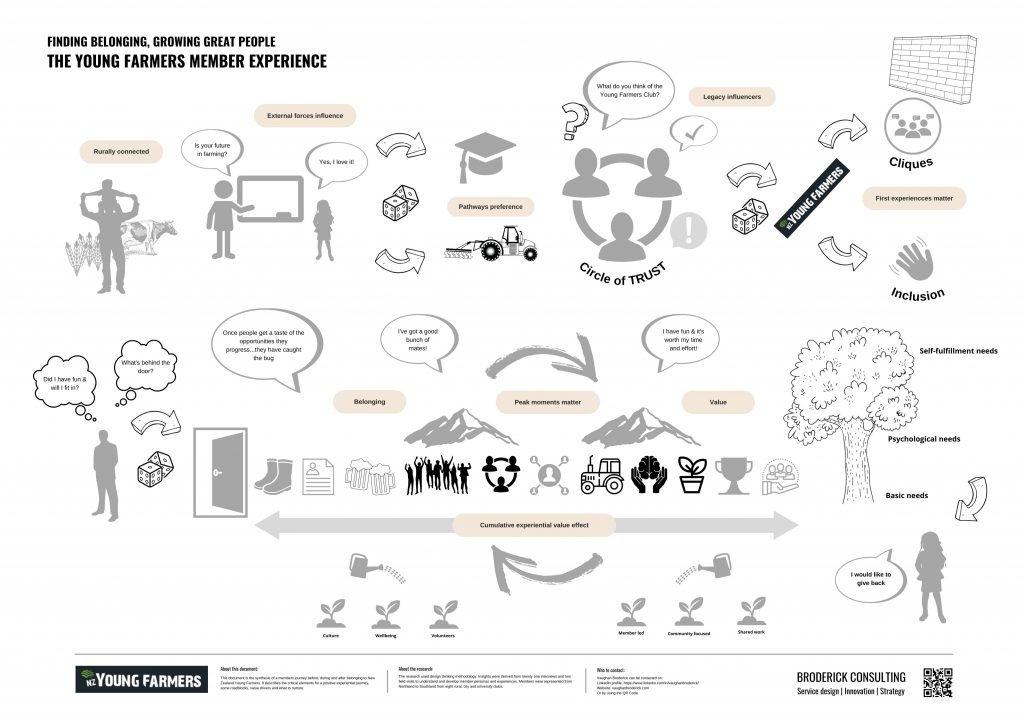Today, I’m going to share a case study of the nationwide not-for-profit New Zealand Young Farmers (NZYF) led by CEO Lynda Coppersmith.
The case study provides an overview of how Lynda and her team responded to the significant challenges they face to remain relevant and thrive.
Many organisations find themselves in a fast-changing world. A world where, what worked in the past, won’t work in the future. Where customer needs are changing. Where disruption is occurring. Where value and customer experiences are critical.
There is something you can do about it.
Future-focused leaders take action. They listen and engage. They encourage ideas and look for insights. They evolve how they operate. They move towards a thriving future.
Unfortunately, some leaders are stuck not knowing what to do. So, they stay as they are. They rely on past success, hoping success repeats. Their organisations become irrelevant.
Future-state leaders transform businesses. Current-state leaders let businesses become obsolete.
Read time: 5 minutes (or less) 👇
This is what we’ll cover today:
- Background.
- Methodology & tools.
- Outputs & assets.
- Impact.
Let’s get going!
Background
Since the first Club was established in 1927, NZYF has been an integral part of New Zealand’s food and fibre sector, supporting 1,600+ young people across a 60+ club network.
The clubs are located in rural and urban settings supporting members with new connections, skills, knowledge, experiences and pathways.
Lynda was already on a journey of building a sustainable business model and had formed assumptions of the membership.
She wanted to challenge her assumptions and gain clarity from deep understanding of the needs of the membership.
The project brief was to understand the personas of the membership.

Solution
Lynda was keen to use design thinking for the work and committed to twenty one member interviews and two club meeting visits for the discovering phase.
The interviewees were from diverse locations, backgrounds, ethnicities, occupations, club roles and membership duration.
During the understanding phase, we used the following tools to derive insight:
- Profiles of each interviewee to capture personal details, observations, attitudes, attributes, behaviours and killer quotes.
- Affinity mapping to identify commonalities, themes, gaps, sentiments and tensions.

Output
We synthesised the insights into four useful outputs:
- Word clouds to visualise the common and significant attributes.
- A point of view statement to articulate the core need of members.
- Fundamental member experiences were identified and presented within the structure of ‘voice of members’, finding and evidence.
- We created and presented an immersive presentation (including video highlights) to the board to help facilitate shared understanding and alignment.
The insights from the discovering phase pointed to the need for the creation of 2 valuable assets:
- Personas were created. Ideally, the fewer personas, the better. But, in this case, two distinct personas were needed to reflect the membership and culture dynamics.
- A member experience journey map. During the understanding phase, it became clear that critical moments, pain points, factors and value drivers led to members’ choices and club viability.

Impact
Lynda shared with me the considerable impact that this work has made on NZYF and herself:
- Lynda is confident that a robust customer knowledge and insight base informs strategy and actions.
- Existing work streams have been strengthened.
- New activities have emerged to enhance existing activities and processes.
- The team use the assets as a reference for service delivery and can “cut through the noise” of daily issues, staying focused on what matters.
- Lynda can add excellent value to partnership discussions providing NZYF with a competitive advantage.



